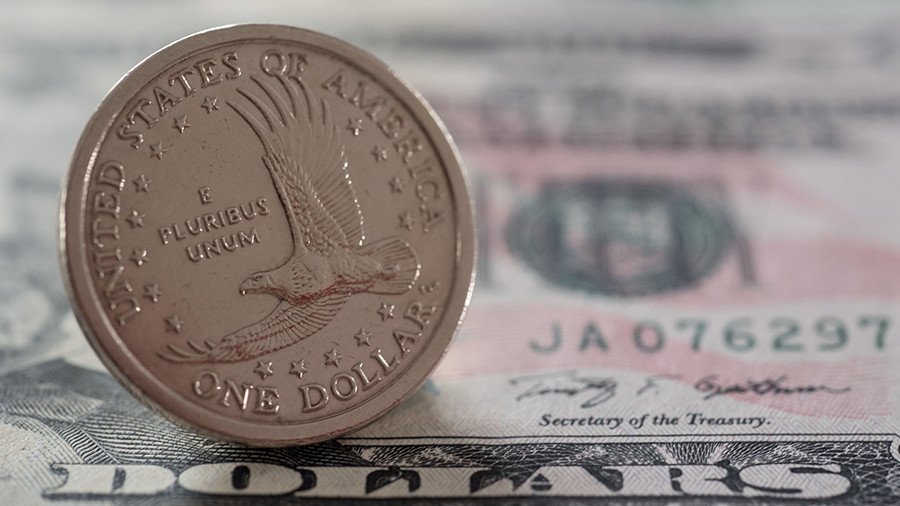Europe running out of dollars as US coaxes companies to bring money home

The European inter-bank market is going through the biggest shortage of US-dollar liquidity in nearly nine years. According to analysts, US tax reform may be behind the largest deficit since the financial crisis.
As the Federal Reserve took a more hardline position towards the US monetary policy, LIBOR, a benchmark rate tied to finance products and debts of over $350 trillion, soared to the highest level in over eight years. Current unsecured dollar loans for the last three months are forcing European banks pay 2.2 percent in annual interest, according to financial news website Finanz.ru.
BREAKING: This time for real: House approves overhaul bill https://t.co/Fg8ILmVjjepic.twitter.com/b47rB4W0GH
— RT America (@RT_America) December 20, 2017
The figure shows that dollar loans nearly doubled in price in the past six months. In November, there was a 1.38 percent interest rate to borrow dollars. The monthly rate increased to 1.82 percent compared to 0.15 percent in 2015.
At the same time, the finance sector has seen a widening of the so-called Libor-OIS spread. This indicator shows the level of availability of the US currency. Its mean value has nearly doubled over the past two years.
The rapid widening of the Libor-OIS spread shows that the market faces a dollar deficit, according to an economist at VTB Capital Neil McKinnon, as cited by the media. The tax reform, currently implemented by the US government, could reportedly have an impact on dollar liquidity across the globe. The measure seeks to encourage American corporations to bring nearly $2 trillion from foreign accounts back home.
US national debt surpassed $21 trillion mark this week for the first time in history https://t.co/UQe2j69IyQ
— RT (@RT_com) March 20, 2018
European lenders are short of dollar liquidity, according to a review by Raiffeisen bank. The analysts stress that the US currency is moving back home and that is causing the deficit.
Toughening of US monetary policy, along with a sharp increase of the key rate, has ratcheted up the situation, according to McKinnon. The US Fed has been shortening the balance, withdrawing dollar liquidity out of system, pumped up after the financial crisis.
As a result, the market sees less and less available dollars and competition for the currency is unavoidably increasing, Jerome Schneider, a managing director at Pacific Investment Management Company, told the media.
US on its way to $30 trillion debt by 2028 as military expenditure soars https://t.co/kIYsyEYbddpic.twitter.com/DGaI3MZhEu
— RT (@RT_com) February 13, 2018
In general, global growth rates of monetary supply have dropped to a minimal level since 2007, McKinnon says. According to the data, compiled by Money Moves Markets, this rate in China slowed down from 10 percent in 2016 to the current two percent, while in Japan – from six to two percent.
In the US, the monetary supply is shortening, while the enormous sovereign debt creates a strong need for cash. After three rounds of quantitative easing, the Fed increased the balance by $3.5 trillion, but the US dollar debt was soaring faster than the money printing press by nearly $10 trillion a year.
The analyst says that limited availability of dollars is able to trigger a new liquidity crisis, which can be followed by systemic financial crisis and global recession.
For more stories on economy & finance visit RT's business section














